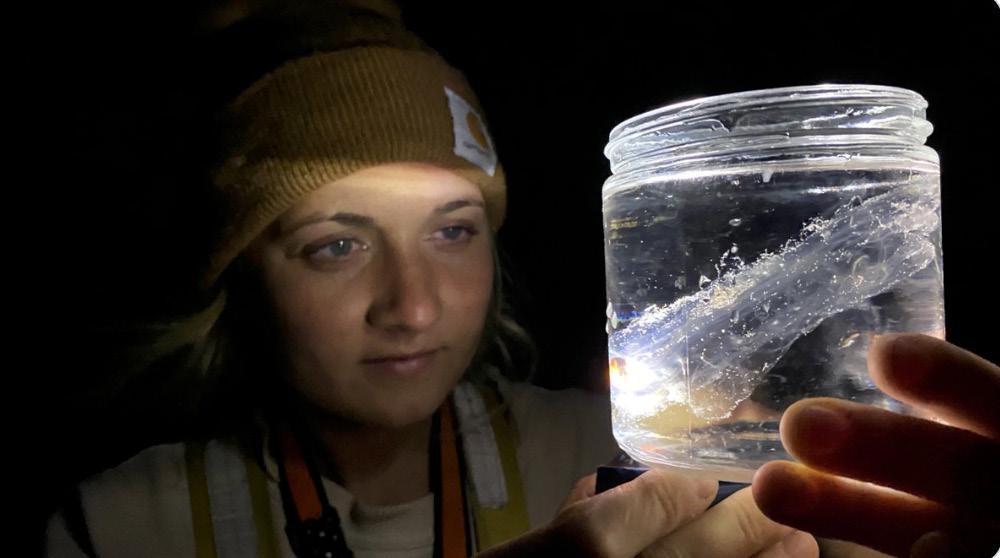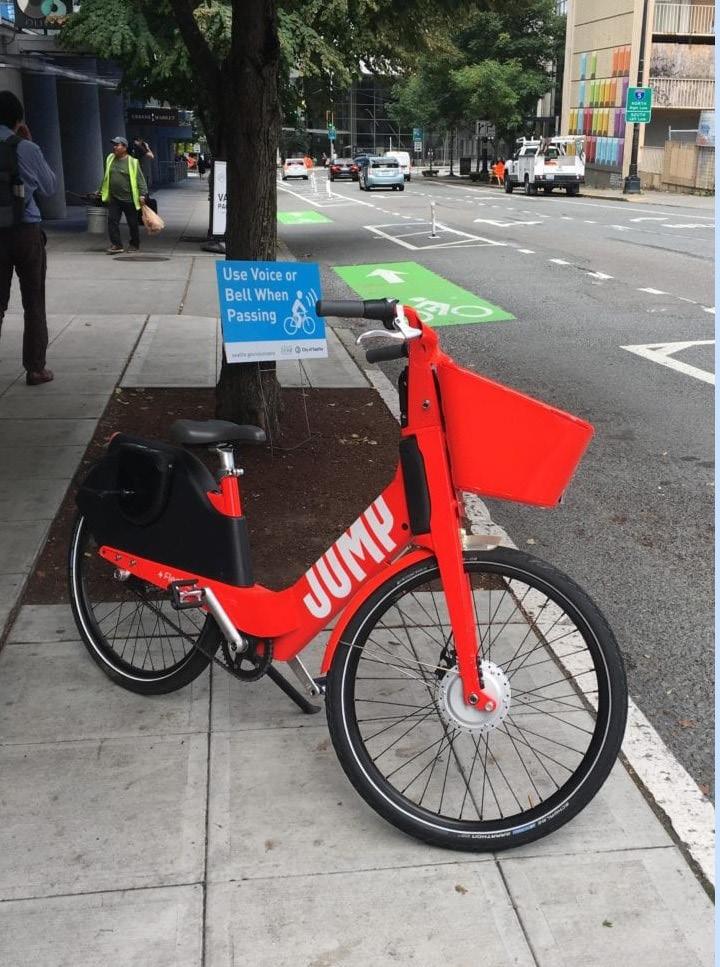
7 minute read
SEA Semester: Life At Sea
from Spring 2020
by FieldNotes
Sea Semester: Life At Sea
by Annabel Weyhrich
There is nothing more exciting to a marine biology student than an abroad program that studies the ocean by sailing the high seas. Sea Education Association (SEA) Semester is a study abroad program that begins in Woods Hole, Massachusetts, and finishes with 6 weeks of sailing on a Tall Ship, a large, traditionally rigged sailing vessel. Woods Hole is a globally recognized hub for the marine sciences, oceanography, and scientific exploration. The town is situated on a ferry’s ride away from Martha’s Vineyard. Just sitting in a coffee shop, you can overhear conversations ranging from new fisheries management strategies to cutting-edge geochemical tools. The portion of the program in Massachusetts is spent bonding with your soon-to-be shipmates and studying in preparation for time at sea.
I studied on the Global Ocean program which traveled to the waters off the North Island of New Zealand. Classes included Directed Oceanographic Research, Sustainable Ocean: Conservation and Management; Maritime History and Culture, The Ocean and Global Change, and Leadership in a Dynamic Environment. Even though these classes continued aboard the ship, time spent at sea was largely focused around developing leadership skills as well as working on directed research projects. At each port, we would go on field trips to immerse ourselves in maritime history and New Zealand culture. We met our ship, the Robert C. Seamans, and crew in Auckland, New Zealand, and spent the first couple days literally learning the ropes and getting a handle on life at sea. As a mate-in-training, one must understand and be able to issue commands for sail handling, effectively navigate, and be competent in all safety checks. The students are split into three groups for the duration of the trip and a group must be in charge of the ship at all times. That means at 3 am you could be standing lookout in the middle of 45 mph winds with ocean swells peaking at 20 feet. You don’t know whether to be in awe of nature, terrifed to be swept away, or delirious from sleep deprivation. After a few weeks into the voyage, the lingo starts to make sense so when someone shouts to strike the jib, you know what sail to lower and where to lower it.
A majority of the trip is spent working to collect and analyze data. Aboard the Robert C. Seamans is a hydrocast, a meternet, a neuston net, and other fun gadgets. Training is conducted to be able to safely and effectively use these instruments. The hydrocast is used to collect water samples at various depths and measures conductivity, temperature, and pressure. The water collected is used to test the pH and Chlorophyll-a contents at those depths. It is terrifying to run the pH test at sea because the instrument used is expensive and there is only one. If a swell rocks the boat and you crack the glass, no one can test for pH for the rest of the trip. The phytoplankton net is lowered 100 meters into the water column to collect plankton which are filtered and preserved to later analyze. The neuston net skims the surface of the ocean and collects larger zooplankton. With specimens collected from both nets, species composition was analyzed; to do this we measured total biomass and conducted identification for 100 species out of a random sampling. One night, a crew pulled up a plankton net filled with 57 Large Salps. In other deployments, sea slugs, crab and lobster larvae, lantern fish and more were sorted through and often preserved. At night, these net deployments take place with only the moon and its reflection off the water as a light source. Once the deployments hit the water, and the drag gives some resistance, the nets start to glow a ghostly green; they become illuminated with bioluminescence from organisms in the water.
Data collected during these trips are used by students to complete their research projects and are more broadly used by a variety of SEA scientists to complete their own research. SEA was one of the first organizations to start tracking ocean plastic and has the largest database for amounts and locations for ocean microplastics. As opposed to other SEA Semester trips, where many hours were spent picking microplastics out of their 100 count samples, we found minimal amounts. This discovery, or lack thereof, perplexed our lead scientist Dr. Jan Witting. Even though we found very little traces of ocean plastic in New Zealand waters at the time, plastic pollution is still a large concern in the global ocean. One piece of information Dr. Witting made sure to pass on is that, as a scientific community, we need to advocate for stopping plastic at its source. Skimming for plastics at the surface can result in killing off the neuston community, which can be detrimental to the top layer ecosystem. As researchers, it is important to think about the negative impacts some forms of measuring can have and to protect areas that make research possible.

Sea slug Glaucus marginatus

A student with a big Salp axima.
In terms of personal research projects, our program had the unfortunate event of being stuck in two very serious gales. For many days, we had to strike the sails and ride out each storm. The waves were so large that only the captain and first mate were allowed on deck and each storm pushed our ship miles off course. During extreme weather, we cannot conduct any measurements for fear of falling over the side or machinery damaging the ship. Once the weather had cleared, we had to sail as fast as possible to make up for lost time, so we couldn’t stop to collect any data. The trip also ended a week and a half early to ensure travel capabilities back to the States due to COVID-19. All of these unfortunate events lead to a lack of data to use in personal research projects, mine being one of them. I was studying the connection between fishing hotspots and Chlorophyll-a concentrations. Fortunately, one student on my trip was able to conduct a majority of her project. She was researching the connection between eddies, circular water currents running contrary to main current, and lobster larvae. During her time at Woods Hole, she found papers surrounding the idea that higher counts of lobster larvae can be found in eddies because of the current’s ability to protect the larvae until they reach maturity. The two eddies in question were located at the beginning of the trip before any of the storms. She found an abundance of lobster larvae in the center of each eddy with the concentration dropping as the ship moved farther away from the center.
It can be daunting to walk onto the ship’s deck and not be able to see land. A ship’s living quarters, or lack thereof, can test even the toughest person. However, the moments you share with your crew and the field work you conduct make up for it all. On one of the first nights after leaving Auckland, my team was in charge of sail handling and conducting safety checks, and it was a gorgeous night. The moon was full enough to give us light, but not bright enough to block out the stars. We had just put the neuston net in the water and it immediately lit up with bioluminescence. Out of nowhere, dolphins started circling the net. Their quick movements in the bioluminescence made it seem like the dolphins were glowing in the dark. Throughout the night, they would play in the front wake of our boat as if they were leading our voyage. We laid down on the bowsprit and looked through the netting to watch them jump through the waves, all the while glowing a greenish hue. You could hear the chirping of the pod on the deck, in the galley, and even in the engine room. Although we experienced various gales, lack of data, and an early termination due to COVID-19, glowing dolphins and sailing the high seas surely made my SEA Semester experience unforgettable.

Images: Annabel Weyhrich








